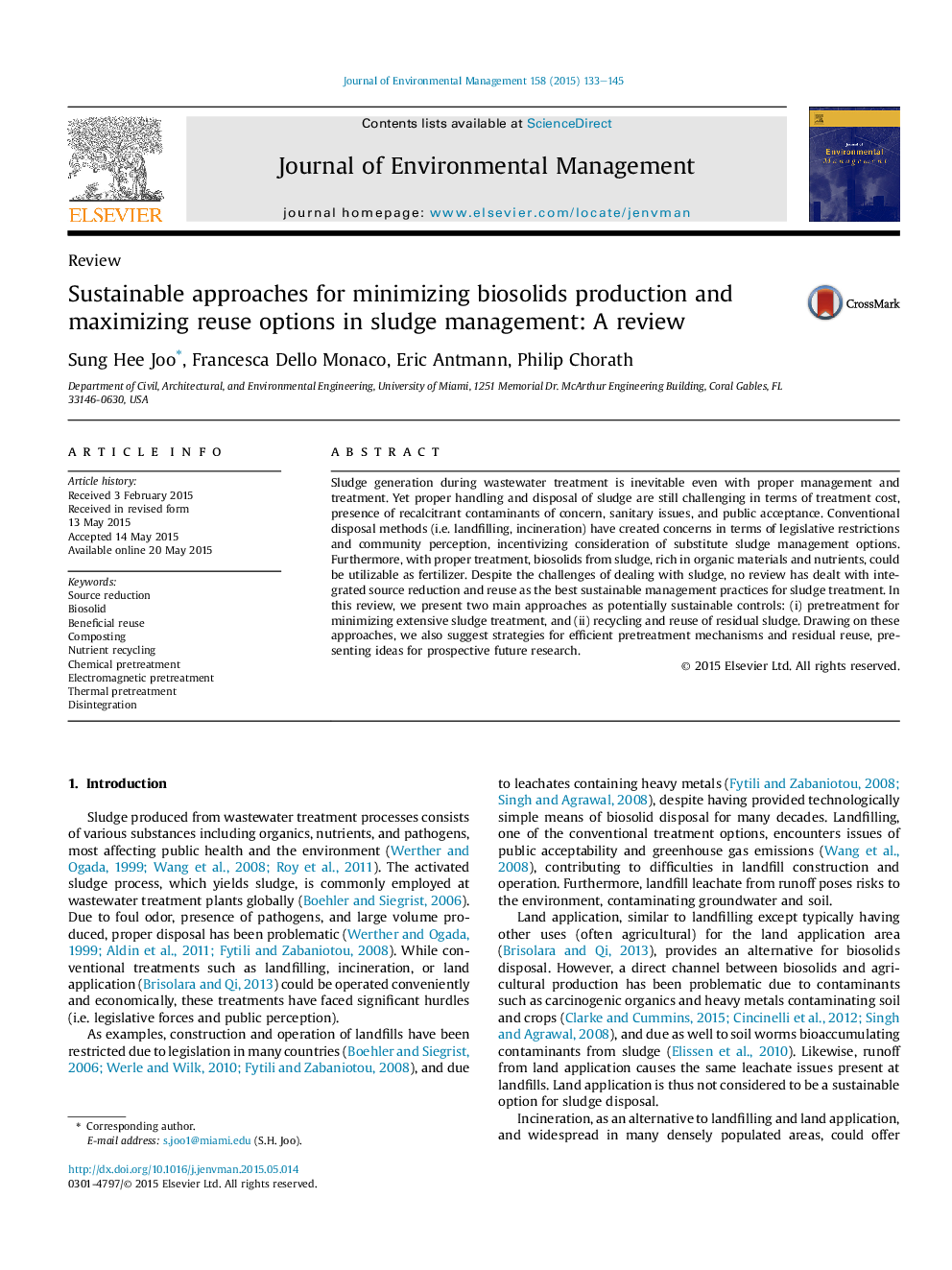| Article ID | Journal | Published Year | Pages | File Type |
|---|---|---|---|---|
| 1055587 | Journal of Environmental Management | 2015 | 13 Pages |
•Integrating source reduction and reuse optimizes sustainable biosolid management.•Combined alkaline-ultrasonic pretreatment is most effective for source reduction.•Suggestions for future research focus on ways to reuse or recover biosolids.
Sludge generation during wastewater treatment is inevitable even with proper management and treatment. Yet proper handling and disposal of sludge are still challenging in terms of treatment cost, presence of recalcitrant contaminants of concern, sanitary issues, and public acceptance. Conventional disposal methods (i.e. landfilling, incineration) have created concerns in terms of legislative restrictions and community perception, incentivizing consideration of substitute sludge management options. Furthermore, with proper treatment, biosolids from sludge, rich in organic materials and nutrients, could be utilizable as fertilizer. Despite the challenges of dealing with sludge, no review has dealt with integrated source reduction and reuse as the best sustainable management practices for sludge treatment. In this review, we present two main approaches as potentially sustainable controls: (i) pretreatment for minimizing extensive sludge treatment, and (ii) recycling and reuse of residual sludge. Drawing on these approaches, we also suggest strategies for efficient pretreatment mechanisms and residual reuse, presenting ideas for prospective future research.
Graphical abstractFigure optionsDownload full-size imageDownload as PowerPoint slide
